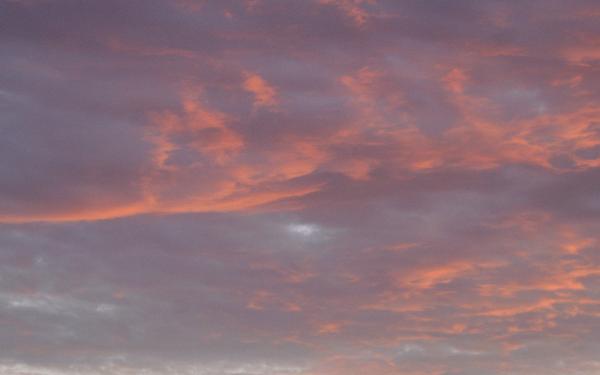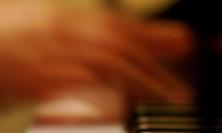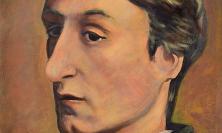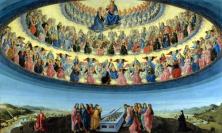
There are many ways to God. Peter Knott SJ describes how a deeper appreciation of the arts may open the way to an awareness of the mystery of God present in all things.
Poetry
The art form which suggests most immediately the relationship between ourselves and God is poetry. In trying to express this relationship, Gerard Manley Hopkins uses metaphor to advantage when he speaks about the horror of an isolated ego: 'Self yeast of spirit a dull dough sours'. The tragedy of an egotistical spirit resisting God is powerfully illustrated by this homely metaphor of yeast in bread ('Sonnet. 67').
A positive image of our relationship with God is given in George Herbert’s ‘Prayer’. He takes the use of metaphor to extremes. This sonnet is a series of extravagant but very beautiful metaphors which bring together disparate elements to illustrate something difficult to express any other way:
Prayer the Churches banquet, Angels age,
Gods breath in man returning to his birth,
The soul in paraphrase, heart in pilgrimage,
The Christian plummet sounding heav'n and earth:
Engine against th' almightie, sinners towre,
Reversed thunder, Christ -side-piercing spear,
The six-daies world transposing in an houre,
A kinde of tune, which all things heare and feare;
Softnesse, and peace, and joy, and love, and blisse,
Exalted Manna, gladnesse of the best,
Heaven in ordinarie, man well drest,
The Milkie way, the bird of Paradise,
Church-bels beyond the starres heared, the souls bloud,
The land of spices; something understood.
This whole series of extravagant metaphors ends simply – ‘something understood.’ And the poet has helped us to understand the mysterious process of prayer through bringing together diverse elements in a pattern pleasing to the soul. Literature in general, and poetry in particular, builds words into patterns which touch the heart and mind and suggest directly the relationship between ourselves and God.
Painting
The visual arts help us to feel something. An ethic and a philosophy are important in creating a suitable mental atmosphere in which we can act in the right way towards our surroundings. But we need also an aesthetic, an organised sensibility which will polarise our feelings and thoughts in an artistic way towards the world which God has given us. Our sense of the divine can be powerfully mediated through our relations with the world of nature. In this context landscape painting has a particular value.
Landscapes virtually without figures were painted in China at least a thousand years before they appeared in Europe. There is something mystical in landscape painting in as much as it expresses the spiritual relationship of humankind and nature. Landscapes can suggest the unseen presence of mind-at-large from which the individual mind takes its source.
This 'nature mysticism', as it has been called, was of importance in the nineteenth century and represented perhaps a wholesome reaction to the unpleasant side of the Industrial Revolution which covered the countryside with scars and led to the expansion of cities and a technological environment for humankind.
By the middle of the twentieth century this nature mysticism of landscape and poetry seemed to have largely evaporated. It was as though many artists had absorbed themselves in the technological environment and were not paying much attention to the given environment of nature. There was a movement into non-representational painting, into the abstract forms which are supposed to be symbolic of events in the mind but which to many are less expressive than the landscapes of say, the Sung painters, Constable, Turner or the Impressionists.
No doubt this movement was a reaction against excesses in nature mysticism. It reminds us that developments in technology and industry are not alien to humanity but part of humankind's response to the divine command to master our environment, increase and multiply: they should also find a place in our artistic expression. Yet however impressive these achievements, the spiritual dimension of the world may be more easily sensed in the natural forms of earth, sky and water. And in the movement over recent years towards representational painting we may be edging further towards a more balanced 'nature mysticism’, suggesting that landscape painting can give us a better insight into the spiritual reality of the world we live in.
Music
The spirit in man and woman responds to the mystical in poetry and painting, and can be helped in a different way through music. Of all the arts music is the most mysterious because the symbols it uses are remote from our immediate experience. In literature we are using words that have a meaning fixed in advance. In painting we are using forms from the external world with which we are fairly familiar. But in music we are using tones that seem to have a life of their own, apart from the external world; and rhythms which, though they have analogies with natural rhythms, are strangely independent of them.
And yet, as all great musicians have insisted, music has some kind of meaning. It says something about the nature of the universe. All great composers have this intense feeling that what they are saying is not just a mere pattern of sound. These complicated rhythms tell us something about the equally complex rhythms of our inner life.
These are probably quite inexpressible in words but then a great many things are inexpressible in words. Words are certainly unsatisfactory for saying what music is about. The nearest we can get perhaps is to suggest analogies to express music in terms of colour, shape or substance; for example, a river flowing to the sea or a black diamond.
Music is about the very subtle and obscure kinds of movement within the mind-body and the spirit. And maybe at the same time music is about the universe at large. It seems to express a kind of nonphysical dynamism in the external world. It can express the powerful feelings that stir the soul at privileged moments which are forces as real as those that interest the physicist: we do not create them any more than we create light and heat. Great spiritual currents flow through the atmosphere in which we live.
This is a mystical view of what music is about and what indeed all the arts stand for. Though they speak of our relationship to the immediate experience, at the same time all the arts tell us something about the nature of the world, about the mysterious forces which we feel to be around us. Music perhaps can best attune us to the spiritual reality of the cosmic order. In the words of Claudel: “music is the voice of God within us”.
Mystery
The forgoing reflections on good art are one way of approaching the mystery of our world which reflects the mystery of God. There is a place both inside and outside religion for a contemplation of the Good. For the Christian however, whatever is good is of God: ‘Whatever is true, whatever is honourable, whatever is just, whatever is pure, whatever is lovely, whatever is gracious, if there is any excellence, if there is anything worthy of praise, think on these things.’ (Phil 4:8). The philosopher Iris Murdoch also invites us to think on these things:
A self-directed enjoyment of nature seems to me to be something forced. More naturally, as well as more properly, we take a self-forgetful pleasure in the sheer alien pointless independent existence of animals, birds, stones and trees. Not how the world is, but that it is, is the mystical.
The Sovereignty of the Good
Supreme works of art
There are many ways to God. Some people may be helped through a deeper appreciation of the arts, seeing them as reflections of the artistry of God, opening the way to an awareness of the mystery of God present in all things. But any approach should include the supreme works of art: man and woman, who are made in the image and likeness of God.
‘We are God’s work of art’ (Eph 2.10). God has loved us into existence because he wants us individually, personally, eternally. God never makes copies, only originals. We are made as we are because that is the way God wants us. But we are not made in some kind of instant mould which remains unchanged forever. We are meant to be changing all our life, growing more into the image and likeness of God in which we are created. We have a model for that change. In Christ we see true God and true man. We see in Christ what it means to be fully human, to be a loving person, wanting the true good for others whatever their attitude to us, forgiving them however difficult the circumstances.
We are God's work of art. We cannot be faithful to his design without Christ: and he cannot come into our lives if we do not ask him. The work of creation is God's initiative: the work of acceptance is ours. We are free to accept ourselves as God's work of art and live accordingly: or reject him and live at a lower level. When we accept ourselves as we are, and accept God as he is, we find it easier to accept others as they are, not trying to force them into our own image and likeness. We accept Christ into our lives when we face the light of truth, refusing to turn back into the darkness of self-love, self-seeking, self-interest, that has no regard for others and their interests .
We are God’s work of art. Not all art is immediately pleasing. A civilised approach tries to widen one's range of appreciation to take in a greater variety of styles. So it is with people. If we limit ourselves to those immediately compatible, our circle of friends is going to be pretty limited. Once we make the effort to understand the worries and fears of others we find life opening out in ways we never imagined.
Of course, if we ‘prefer darkness to light’ we are never going to see this. But ‘the man who lives by truth’ will learn to recognise true art: and realise that the works of art which God makes are made not just for time but for eternity.
Peter Knott SJ is Chaplain to Barlborough Hall School.





